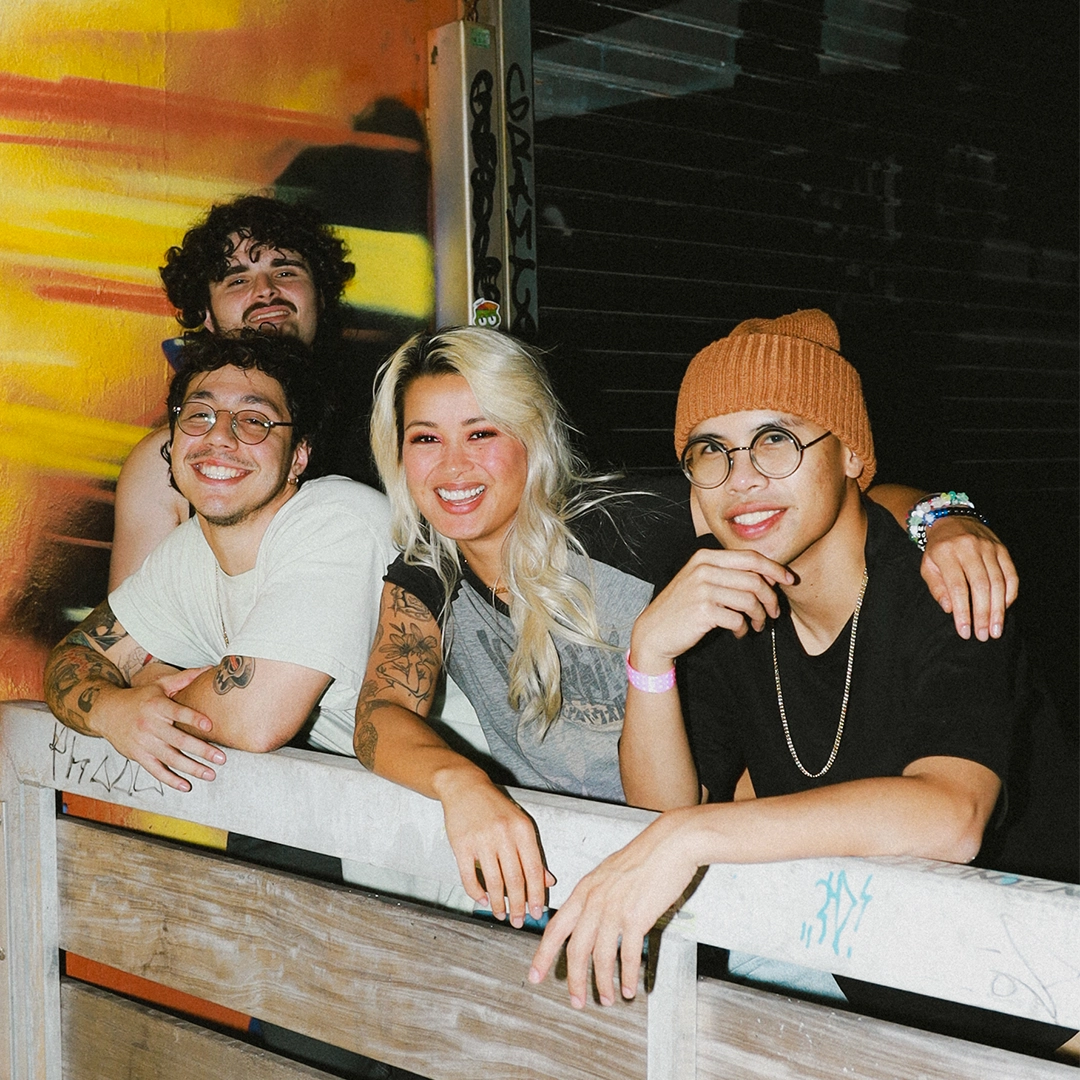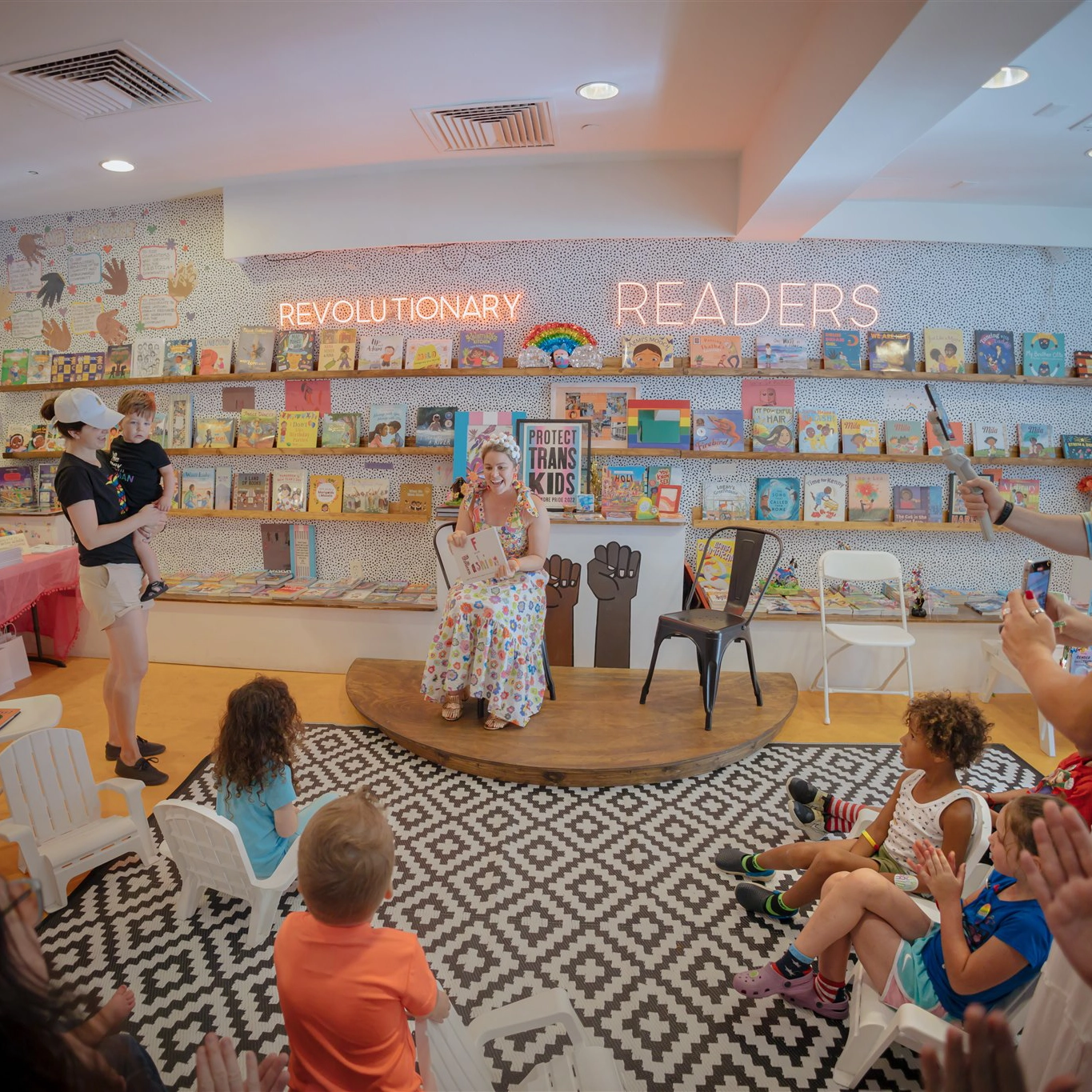The Tedeschi Trucks Band Reveals the Inspiration Behind Their Biggest Project Yet
The southern rock ensemble discusses the intricacies of releasing the four-album series "I am the Moon."

Any artist might be nervous about the response to their latest work, especially coming out of an extended break caused by a global pandemic, but I Am the Moon, the genuinely epic new project from the Tedeschi Trucks Band, raises the ante to never-imagined heights for the group’s namesakes, guitarists Susan Tedeschi and Derek Trucks.
If Tedeschi and Trucks had any fears, however, they were quickly alleviated after the release of Episode 1: Crescent, celebrated with the debut of the first of four short films made to accompany the recordings. Trucks’ parents joined the family gathering to watch at the riverside home he and Tedeschi share in Jacksonville’s Mandarin neighborhood, along with a global audience on YouTube.
“My dad’s seen it all,” said the musician, speaking by phone on a recent morning before the band launches its summer tour, which kicks off Friday in Jacksonville.
“If he doesn’t like something he’s not going to blow smoke, but if he does, it really moves him. He’s a great person to bounce music off of because I can just look in his face and tell whether I’m hitting the spot or not. When he’s over there with that shit-eating grin on his face, I know we’re doing alright.”
The Jacksonville duo, a couple since 1999, have enjoyed extensive solo careers and recorded together since Tedeschi Trucks Band’s 2011 debut Revelator—not to mention Trucks’ 15 year run in the Allman Brothers Band, playing alongside his uncle Butch, an original member of the foundational Southern rock band. I Am the Moon, inspired by Persian folklore and born out of the pandemic lockdown, is unprecedented in either career. Its 23 songs, recorded in collaborative zeal with a spirited ensemble, unfold across four albums to be released monthly between June and September this year. It’s a lot.
In the 1960s and ‘70s, the artists that towered in the rock’n’roll pantheon made their major statements via the double album. Think of The Who’s Quadrophenia, the Rolling Stones’ Exile on Main St., or The Beatles’ White Album. Everyone streams now, so the concept has lost its meaning. Maybe it takes a double double album—a quadruple album—to shake things up again. If so, it’s not like the musicians had anything so ambitious in mind when they started.
An idea began percolating in 2019, after the Tedeschi Trucks Band joined Phish guitarist Trey Anastasio for a special one-off cover performance of Layla and Other Assorted Love Songs, a totem of ‘60s-era blues rock and the only album (a double!) recorded by the supergroup Derek & the Dominos in 1970. Derek & the Dominos featured guitar gods Eric Clapton and Duane Allman, twinning their instruments for one brief shining moment, and became a staple of “classic rock” radio with its title track, “Layla,” a searing, elegiac anthem to impossible love, in which Clapton took a cue from 12th century Persian poet Nizami Ganjavi to agonize over his romantic yearning for Pattie Boyd, then-wife of Beatle George Harrison, his best friend.
My dad’s seen it all. He’s a great person to bounce music off of because I can just look in his face and tell whether I’m hitting the spot or not.
— Derek Trucks
Derek Trucks grew up on the record. He was named after it. And even after the Tedeschi Trucks Band’s total immersion into every granular aspect of it, there was somehow something more to explore.
“It’s emotionally the same content over and over: wanting something you can’t have,” Trucks said, recalling the insight of Mike Mattison, the multi-instrumentalist who also writes songs with the band. Mattison went back to the original inspiration for the song, composed by Clapton, drummer Jim Gordon and an uncredited Rita Coolidge: Layla and Marjun, a narrative poem of star-crossed love and tortured desire that Lord Byron called “the Romeo and Juliet of the East.” Mattison suggested reframing the perspective, Trucks said. “Like, what does Layla think about all this shit?”
Then COVID-19 came along, and suddenly a band whose very blood is touring had to sit on its hands for a long, uncertain period.
At the outset, Mattison suggested the musicians read the poem, spend some time thinking about it and write together. “We went 20 months without a gig,” Trucks said. “It was a good exercise to keep everyone on the same page for a moment.”
As the moment stretched into months, perceived adversity became opportunity. The band’s core ensemble gathered for stretches of time, off and on over several months, at Swamp Raga, Tedeschi and Trucks’ home/studio situated on the St. Johns River— a summer camp-style situation captured in the first longform video for I Am the Moon.
“The concept had its own gravity,” Trucks said. It broke their routine of recording new music in bits and pieces between tour dates. Instead, “We were all stuck in the same situation, and we never left that place mentally,” he said. “We didn’t have 30 gigs in between that made you think about music differently. Every day we would start with breakfast, coffee and ‘Does anyone have any ideas?’ It was fun, man. Definitely one of the most creative periods I’ve been a part of where everything worked.”
The collective approach defines the band, whose dozen members include five songwriters, and whose kaleidoscopic range of sounds and textures evokes the rich panorama of American music.
“We really do have that ’60s kind of vibe,” Tedeschi said. “When we first started putting the band together, Derek and I were inspired by Mad Dogs and Englishmen. [The sprawling, all-star tour group Leon Russell put together for gravelly singer Joe Cocker’s 1970 U.S. tour.] We loved the idea of having this crazy circus of a band.”
One template for the project was John Coltrane’s 1964 classic, A Love Supreme, a four-part suite that marked the saxophonist’s recovery from heroin addiction with sublime expressions of devotion and spiritual ecstasy.
“We thought about the classic story arc,” Trucks said. “The bell curve. There’s the beginning, the rising action, the thing that happens and then the resolution, I was thinking about A Love Supreme, also thinking about the length of that record, and the length of [Jimi Hendrix’s] Axis: Bold as Love, and the quintessential albums, the ones that changed our lives musically.” One thing those albums have in common is they run for about a half-hour. “That’s the way to listen to a record,” he continues. “We’ve gotten into this habit of piling in 75 minutes on a CD because you could. No one listens top to bottom anymore. It’s playlists anyway now, but we really wanted to try to make this record go down in small bits for people.”
A Musical Love Story
Back in 1999, Derek had just enlisted with the Allman Brothers Band. Susan was the opening act on tour, and her career “was really kicking off,” Trucks recalled. “She was on the road with us for a few months and we connected right out of the gate.” At age 20, Trucks was fresh out of a relationship and liked to joke with his band about staying single, “until I find a girl that’s listening to Howling Wolf, John Coltrane. I had this stupid list” Then he met Tedeschi, who was 28. “I remember calling my band, ‘I think I stepped in it.’”
Tedeschi remembers an immediate connection, but not too much overlap in their record stashes. “I had a collection of blues completely different from his collection of blues,” she said. “I went to a jazz college, and he was turning me onto all the jazz artists. We have a lot of similar passions about music, and we can almost finish each others’ melodic statements—him on slide and me vocally. Yet, we’re very different musicians, so it’s kind of cool to bring those two worlds together.”

Mutual respect guides their union. “We both take what we do in the time onstage and the music we make really seriously,” Trucks said. “It’s almost your religion at that point.” The pair waited a decade before forming the band that bears their names, a time span that also allowed them to assemble their lives with each other. “We were together, living together, had kids, got married. We did everything out of order, we did everything sideways.”
Relationships are one thing, but giving up their own solo careers to make a band together was “a little scary,” Tedeschi said. “We are a couple, and we’re both leaders and we both have egos and we both have our own ways of doing things. It’s a leap of faith, and it was rocky off and on, but at the same time it was natural, too, and organic. It was kind of finding our way, and finding the right people to bring along with you.”
Trucks lauds his wife as a “voice for the ages,” whose role as the band’s focal point raises the bar for everyone onstage. Tedeschi first took to the stage at age 5 or 6, belting out musical theater, and was playing in bands by the time she was 12. She eventually was drawn deep into the African-American gospel sound, singing in Black churches. Her role models became singers like Ray Charles and Aretha Franklin, who broke new ground by transposing gospel fervor to the earthly pulse of rhythm-and-blues and thus invented soul music.
“If I could have made a living doing that I would have,” she said. “I love telling a story but I love singing passionately. I want to feel the emotion in the music. If I could connect those two, that would be my thing.”
Those skills are formidable in any band but were even more so in the couple’s new configuration. “When I think about those great Allman Brothers records, what they had over all the bands of that era, at least the bands that were improvising, Gregg could sing his ass off,” Trucks said. “Not many bands of that era had a guy who could sing like that. Then you had a band that could play anybody under the table. That’s a pretty deadly combination. In a totally different way, that’s what we’ve been able to capture with this band. Her guitar playing is so unique and also fearless and singular. People have all kinds of facility but they don’t have tone. When Sue steps up and makes it happen you are locked and loaded and the band is focused and everybody’s in it. It’s powerful.”
Birth of a Prodigy

Tradition, bloodlines—both literal and spiritual—are elemental to the alchemy that these musicians can create. As a pre-teen prodigy, Trucks early in life signaled his intention as a next-generation inheritor of the Allman legacy. He was 9 years old when he picked up his first guitar at a garage sale. He was 15 when I first heard him play at a college bar in Birmingham, Alabama. At the time, his father Chris offered me the closest thing he had to an origin myth.
“He bugged me for like two months to show him what I knew on guitar,” his father said. “When I did, he learned everything I knew in two days. We had a friend come over and give him about three lessons, and he was onstage playing. Within a month, he was in the Toronto Jazz Festival.”
Blues legend Buddy Guy welcomed him to his Chicago club, and Bob Dylan had him sit in with his band. Col. Bruce Hampton, the wizardly Atlanta bandleader who died onstage in 2017, was a mentor from early on.
“He had a soundcheck and we just sort of froze, thinking what is that?” the Colonel told me, back at that Birmingham nightclub. “You couldn’t see him because he was so short. There was this guitar sticking up.”

I didn’t catch up with Derek again for another 15 years. He was onstage at New York’s Beacon Theater, for the Allman Brothers Band’s annual ritual spree of concerts, this time marking its 40th anniversary. Again and again, over the course of maybe three hours, Trucks scorched earth and stormed heaven, displaying all the guitar-hero chops anyone—not least the Allman Brothers Band’s fervent fanbase—could hope for, yet also conjuring that thing the Afro-Atlantic cultural historian Robert Ferris Thompson called “the flash of the spirit.” It’s not an act or process of ego, but of submission to forces far beyond the frets and fingertips; a quest for the transcendental, for the ecstatic, that flows through the world’s sacred music, and the gospel, jazz and blues that the Allmans fused, with such magisterial elegance, into their own Southern harmonics.
“I went into it eyes wide open, guns blazing, trying to make it happen the best way I could with an immense amount of reverence,” Trucks recalled. “I was there 15 years and at some point you go from being the young guy in the room to guiding the ship in a subtle way or sometimes not so subtle ways. The amount of lessons you learn are immense. Seeing the way my uncle would hit the stage every night. There were some nights he could barely walk. Once he got behind the drum kit, that dude sounded like he was 28 years old. He would pound three hours and there’d be blood on the snare and then he’d get off and barely be able to walk but if there was an encore he’d get his ass back up there.”
Trucks’ main guitar, based on a 1961 Gibson SG that belonged to Dickey Betts, was a gift from Duane Allman’s daughter Gladrielle. He managed to track down the original model, which Betts had given to Duane, and had also been owned by Graham Nash, but as Trucks laments, “It went up for auction selling for more than my house and studio combined, so I’m good.” (One of Tedeschi’s guitars is an exact replica of the Les Paul “Beano” Eric Clapton played with his early band the Blues Breakers, which Clapton gave to Trucks).

The Southern Rock Spirits
Duane’s presence “was always close” when the Allman Brothers Band played, said Trucks, whose musical circle also suffered the loss of a close friend and bandmate when keyboardist and flutist Kofi Burbridge died in 2019. We were talking about the way mastery is passed along from generation to generation in traditional music—Pakistani qawwali or the griot music of Mali—and how it manifests with a palpable energy. Trucks recalled seeing the great Indian tabla player Zakir Hussain perform once, immediately after his father Allah Rakha had died. “You could feel the shift,” he said. “He was now the guy. You could feel the weight. You could feel it in the air. That’s a real thing, man. We felt that inside of our band when Kofi passed. That’s a lot of music that just went. We would lean on him a lot, and he was such a genius. You could feel the whole band step it up in a different way. That’s our job now.”
You can imagine the unseen hands of spirit guides floating over Swamp Raga, or you can consider one word that comes up often in conversation with Tedeschi: “serendipity.” It applies to the way that forces that can unexpectedly, or by strange coincidence, shape the creative process. For Farewell, the fourth and final album of I Am the Moon, Trucks had composed an instrumental called “D’Gary,” named after the Malagasy guitarist he admired. When Tedeschi added lyrics, she turned to a different source of inspiration: the Japanese novelist Haruki Murakami (The Wind-Up Bird Chronicle), a favorite of both hers and her husband. A friend’s father is close to the writer and shared with him the subject of I Am the Moon: Layla and Marjun. It seems appropriate, given how often Murakami’s male characters find themselves in a surreal limbo, pining for women who have gone missing. Murakami sent advice: “He said, ‘Well, what about Layla in death and him in the graveyard, talking to her after she’s gone,’” Tedeschi said. In the studio, the song didn’t tilt that way, but the singer had a “weird, existential out-of-body experience where stories and words come out naturally. I think it was the excitement of even talking about Murakami.”
The band pays more obvious homage to a radically different visionary, and mythmaker, in the instrumental jam that closes Crescent, the first section of I Am the Moon. The track, titled Pasaquan, namechecks the seven-acre compound in Buena Vista, Georgia, where artist Eddie Owens Martin, also known as St. EOM, created a visionary art environment, channeling African, pre-Columbian Mexican and Native American elements and symbols, all dedicated to the greater glory of Pasaquoyanism, the religion he invented after a peripatetic career as a fortune-teller, bartender, street hustler and drag performer. Trucks was introduced to St. EOM by his mentor, Hampton, as nearly outrageous a raconteur.

“I was 12 or 13 years old, and he played me a short documentary on Pasaquan,” said Trucks, dumbfounded that such a place existed, and not even that far away. “It felt like some alien community.” Decades later, Trucks and Tedeschi were spending time at their central Georgia farm when a friend, who has since passed away, took them to the site, now listed on the National Register of Historic Places.
“I really loved the whole idea of this place in the middle of Georgia, which obviously is a very rural red state, and to have such a progressive human being that lived there, to flourish there was really a fascination to me,” said Tedeschi, who joined the band to shoot a performance at Pasaquan, featured in the video. Amid the multi-colored mandalas, surreal statuary and hallucinogenic patterns, she and Trucks and their carnival of a band found the peace that eluded poor Marjun. “His whole idea was of this utopian society where all different kinds of people get along and love each other and live in harmony. With so much divisiveness in the world, I just love this idea of people coming together and being in peace and love.”
It’s the vibe filmmaker Alix Lambert (whose career includes a stint writing for the iconoclastic Western series Deadwood) makes vivid in her glimpses of the band, with home-movie textures and time-lapse flowers blooming juxtaposed with snippets of the musicians playing at Pasaquan, their simmering blues, funky New Orleans brass, and soulfully vocalized yearnings animating old footage of St. EOM twirling with arms outstretched like a deep-fried dervish—one with a red wooly cap instead of a conical sikke. It’s easy to imagine how this cosmic whirl opens out into the democratic vistas the band embraces as it tours into October, shining a light for a troubled nation.





